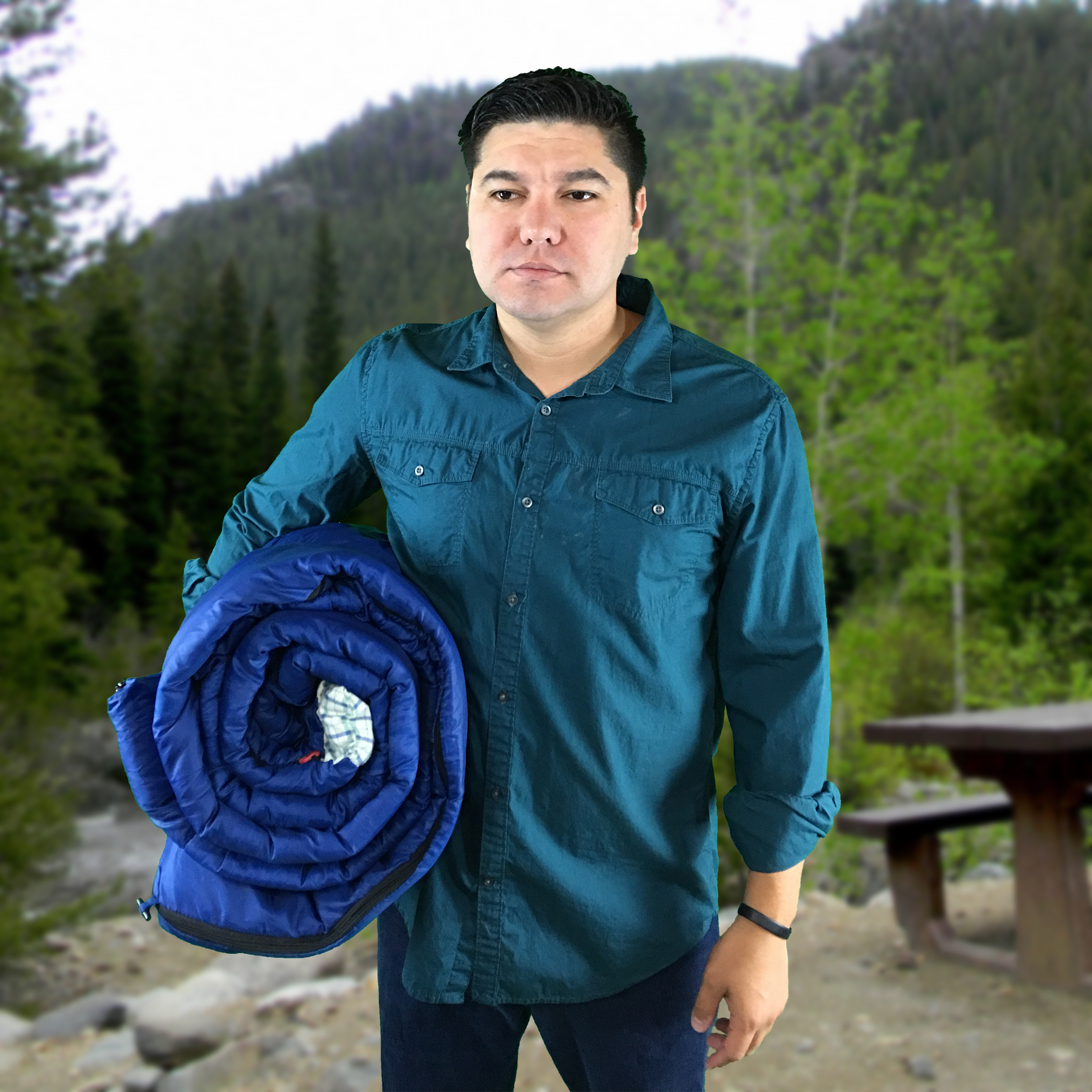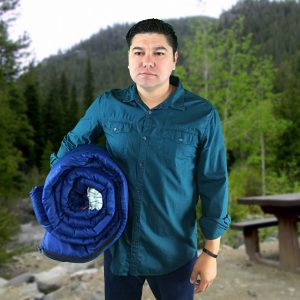
Types of Sleeping Bags For Tent Camping In The Great Outdoors
Types of Sleeping Bags For Tent Camping In The Great Outdoors
 Tent camping in the great outdoors can be a lot of fun. Whether it is spending a weekend with good friends, some alone time with mother nature and your significant other, or backpacking across the wilderness there is nothing like being in tune with nature. However, it is important to know the different types of sleeping bags. You’ll want to ensure that you purchase one that is right for you and your camping trip so that you can be sure you will be able to sleep comfortably outdoors. In this article I’ll be discussing sleeping bag temperature ratings, sleeping bag insulations, and sleeping bag shapes. All of these are important to understand to make sure you are getting the right sleeping bag to fit your needs.
Tent camping in the great outdoors can be a lot of fun. Whether it is spending a weekend with good friends, some alone time with mother nature and your significant other, or backpacking across the wilderness there is nothing like being in tune with nature. However, it is important to know the different types of sleeping bags. You’ll want to ensure that you purchase one that is right for you and your camping trip so that you can be sure you will be able to sleep comfortably outdoors. In this article I’ll be discussing sleeping bag temperature ratings, sleeping bag insulations, and sleeping bag shapes. All of these are important to understand to make sure you are getting the right sleeping bag to fit your needs.
Sleeping Bag Temperature Ratings
When you see the temperature ratings on a sleeping bag these are an indication of the lowest temperature which can keep an average person warm. These temperature ratings assume that the user is wearing a layer of long undergarments and sleeping on a one inch pad underneath the sleeping bag. It is important to understand the every person’s metabolism and comfort level are different so the below chart is meant to be used as a general guideline for choosing a sleeping bag.
| Sleeping Bag Ratings | Bag Comfort Ratings |
| Summer/Indoor | +40°F or higher |
| 3-Season Bag (Spring through Fall)/Summer High Altitude | +15°F to +40°F |
| Winter Camping | -10°F to +15°F |
| Polar/Extreme Alpine | -10°F or lower |
As a general rule of them it is recommended that you select a sleeping bag that is at least 10°F lower than the coldest temperatures you expect to encounter while outdoors on your camping trip.
Sleeping Bag Insulation Types
Synthetic Insulation
Synthetic insulated sleeping bags are usually less expensive than down sleeping sleeping bags. They are made of synthetic polyester fibers that are able to stand up to getting wet while still keeping you warm. They are also hypoallergenic which is great for allergy sufferers who are allergic to down. Synthetic sleeping bags are very durable and an ideal choice for most people, however it is not as compact as down so it can take up a little more space.
Goose-Down Insulation
Down insulation comes from the feathers (usually geese) of water fowl. Down sleeping bags can come anywhere from 400 fill to 800 fill power. Fill power refers to volume that a given amount of down occupies. Down sleeping bags compress down more than others thereby taking up less space. A down sleeping bag can be compressed far more times than synthetic and still expand and keep you warm for many years. The only downside to down is that when it gets wet it tends to lose some of its warming capabilities.
Cotton Insulation
Cotton insulated sleeping bags are good for indoor sleeping or car sleeping. However, due to cottons tendency to get weighted down, and lose it’s warming capability when getting wet it is not a good choice for outdoor camping. Cotton takes a long time to dry out when it gets wet and
Sleeping Bag Shapes
Rectangular Sleeping Bags
Rectangular sleeping bags are an ideal choice if you are looking for comfort and more interior space for moving around when sleeping. However, they tend to have more dead air space that takes longer and more body heat to warm up. They are not the ideal choice for cold weather conditions, and tend to be heavier and take up more space. If you are looking for a budget friendly sleeping back for warm weather conditions then a rectangular sleeping bag can be a good choice.
Mummy Sleeping Bags
Mummy bags are by far the best at keeping you warm and protected from the outdoor elements. They are usually more narrow at the hips and shoulder area creating a better fit with minimal dead air space. However this can pose a problem for people concerned about the restrictive capabilities. Mummy sleeping bags are lighter and easier to carry around.
Semi-Rectangular Sleeping Bags
Semi-rectangular sleeping bags are a hybrid between mummy and rectangular sleeping bags. They are tapered at the head and foot area and tend to be heavier than mummy bags but lighter than traditional rectangular bags. If you are looking for warmth but concerned about the restrictive nature of the mummy bags then the semi-rectangular sleeping bags can be an excellent choice for you.
As you can see there are many considerations to factor in when selecting a sleeping bag. Be sure to choose one that fits your needs so you can be assured you’ll get a good night’s rest on your next camping trip.
Taking care of your sleeping bag properly can ensure that it lasts for many years. Follow these simple tip to make sure you continue to get the best use out of your sleeping bag:
- Make sure you always air out and thoroughly dry your bag after every use.
- You may want to wash your bag if you have used it for more than a few nights.
- Follow the care instructions when washing your sleeping bag. These are usually listed on the tag. Most sleeping bags should be hand washed with mild detergent or washed in a front-loading washer on gentle cycle. Always tumble dry on low heat.
- Store your bag in a cool, dry place and don’t leave it tucked into a compression sack, or it will eventually lose loft and may permanently lose it’s effectiveness. Most bags come with two sacks: a small one for camping and backpacking, and a larger one for long-term storage. If your bag didn’t come with a larger storage bag, you can simply use a trash bag. This will also help keep out bugs. Just make sure your bag is completely dry before storing it.
- Never pack away a wet sleeping bag for longer than it takes to drive home from your destination. Hang it out to dry as soon as you get home. If the bag has a musty or funky odor after being dried, consider washing it.
LET'S BE FRIENDS!

